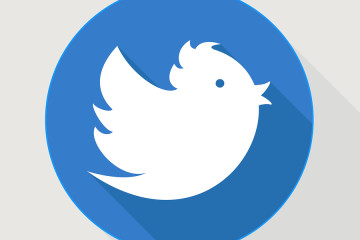Red-Hot Tech Stocks Lose Some Big Supporters: The Daily Prophet

published Aug 15, 2017 3:30:07 PM, by Robert Burgess
(Bloomberg Prophets) —The rally this year in U.S. stocks has been defined by its lack of breadth. Put another way, without the eye-popping returns of a few high-flying technology stocks, the performance of the market would look very different — and not in a good way. So it’s more than a bit concerning when the so-called smart money starts to pull away from this exclusive club known as the FAANGs — Facebook Inc., Apple Inc., Amazon.com Inc., Netflix Inc. and Google parent Alphabet Inc.
That’s the takeaway from the latest 13F filings Monday that hedge fund managers use to disclose their holdings. The reports, which are due 45 days after the end of each quarter, showed that Ken Griffin’s Citadel sold 3.4 million shares of Apple, the majority of its stake, according to Bloomberg New’s Simone Foxman. Viking Global Investors, led by Andreas Halvorsen, disposed of 9.6 million shares of Facebook, or most of its holding. Those moves are probably not enough to change anyone’s broad views, but it should be noted that the group has stumbled recently. Between the end of 2016 and July 24, the FAANGs gained some 36 percent as a group, compared with 9.39 percent for the S&P 500 Index. Since then, the FAANGs have underperformed, losing 2.63 percent to the S&P 500’s 0.18 percent decline.
No less than Howard Marks, the co-chairman of Oaktree Capital Group LLC, has listed addiction to FAANG stocks as one of a handful of vulnerabilities that could spell the end of what is now the second-longest bull market ever. Amazon, Alphabet and Netflix kept their luster with hedge funds, according to Foxman. Melvin Capital took a new stake in Alphabet of 248,842 shares; Pointstate Capital added to its position in Amazon, buying 143,300 shares; and Scopus Asset Management took a new stake in Netflix of 425,000 shares.
MORE DANGER SIGNS FOR EQUITIES
If the latest hedge fund holdings aren’t enough to shake your faith in equities, then consider Bank of America Merrill Lynch’s client survey. The firm polled 202 clients Aug. 4-10 with $587 billion of assets under management. A net 46 percent of respondents — a record high — say equity markets are overvalued. That’s not just lip service, as the survey also found that average cash balances remain steady at 4.9 percent globally, above the average of 4.5 percent over the past 10 years. They’re especially pessimistic in Europe, where cash weightings in portfolios rose to 5.3 percent, the most since March 2003. Of course, many savvy investors like to interpret such extreme negative sentiment as a bullish signal. Here’s another interesting tidbit from the survey: Only a net 33 percent of investors think corporate profits will improve over the next 12 months, down 25 percentage points from January and the lowest level since November 2015. Without earnings growth, about the only thing the bulls are left with is hope. Investors expectations of corporate profits have taken an ominous turn this year, Michael Hartnett, the firm’s chief investment strategist, wrote in a note accompanying the report, which is a warning sign for equities over bonds, high yield over investment grade, and cyclical sectors over defensive ones. Further deterioration is likely to cause risk-off trades.
TREASURIES FIND THEIR EQUILIBRIUM
Despite the lack of volatility, these are harrowing times for bond traders. Not only are Federal Reserve officials still talking about raising interest rates again before the year is out — something that isn’t fully priced in — but they are also signaling that they will soon begin shrinking the central bank’s $4.5 trillion balance sheet. That means the Fed won’t reinvest all the proceeds from maturing bonds back into new bonds. With that in mind, how does one go about figuring out just what exactly is fair value? The strategists at BMO Capital Markets took a look at the Treasury market and concluded that the critical yield level for benchmark 10-year Treasuries is 2.25 percent. That’s the average yield over the past three months and a level that the market seems to gravitate to time and again. The magnetism of 2.25 (percent) indicates that it’s the Treasury market’s equilibrium point between a Fed intent on tapering in September and a backdrop of inflation uncertainty (that) offsets any hiking urgency, the strategists, Ian Lyngen and Aaron Kohli, wrote in a research note. Lyngen and Kohli recently placed No. 1 in U.S. Rates Strategy and Technical Strategy in Institutional Investor’s annual fixed-income research poll.
OPEC PLAYS THE LONG GAME
Will oil ever again consistently hold above the psychologically important $50-a-barrel level? The recent action suggests if it does, it won’t be anytime soon. Oil traded near a three-week low of about $47 a barrel Tuesday amid continuing concern about growth in U.S. shale production. When OPEC and Russia first embarked on their strategy to clear a global oil glut, it was expected to succeed within six months. It now looks like the battle could last for years, according to Bloomberg New’s Grant Clark. The Organization of the Petroleum Exporting Countries and its partners plan to wrap up their production cuts next spring, already nine months later than originally expected, Clark reports. Yet oil prices are faltering again as data from the International Energy Agency show world inventories could remain oversupplied even after the end of 2018. ESAI Energy LLC predicts that, rather than months, draining the surplus may take years. They’re going to have to dig in for the long haul, Neil Atkinson, head of the IEA’s oil markets and industry division, said in a Bloomberg Television interview. Rebalancing is a stubborn process. Oil prices have lost 11 percent in London this year as the production cuts that OPEC, Russia and other partners started in January fail to disperse a world surplus.
IS CANADA’S HOUSING BUBBLE FINALLY BURSTING?
Canada’s benchmark home price fell by the most in nearly a decade last month as Toronto led a fourth-straight decline in sales. The nationwide benchmark home price declined 1.5 percent to C$607,100 ($476,000) from June, the Canadian Real Estate Association said Tuesday, the largest drop since the previous recession. In Toronto, the country’s largest city, the price fell 4.7 percent on the month. The steam is coming out of Toronto’s housing market after Ontario’s provincial government introduced measures in April that included a foreign buyer’s tax to cool what officials called unsustainable price gains, according to Bloomberg News’s Greg Quinn and Erik Hertzberg. Mortgage costs have also started moving up from the lowest in decades after the central bank raised its benchmark interest rate last month for the first time in seven years. Sales of existing homes in Toronto fell 5.4 percent in July from a month earlier. That accounted for a major portion of the 2.1 percent national decline. Total resales nationwide are down 15 percent after reaching a record in March.
TEA LEAVES
The National Association of Home Builders/Wells Fargo Index of sentiment for August unexpectedly rose the most since March on Tuesday. Could it be that the increase was a reflection of a strong July for the industry? The answer to that question may come Wednesday when the Commerce Department releases its report on July housing starts. The median estimate of economists surveyed by Bloomberg is for a small increase of 0.4 percent, following a June 8.3 percent surge that was the strongest this year. The economists at Bloomberg Intelligence note that the June housing starts report indicated a strong rebound in single-family permits, which provides reason to believe that housing starts will pick up in July and further into the rest of the year. Also, recent data show that construction hours worked increased for two months through July, they add.
This column does not necessarily reflect the opinion of the editorial board or Bloomberg LP and its owners.







No Comment